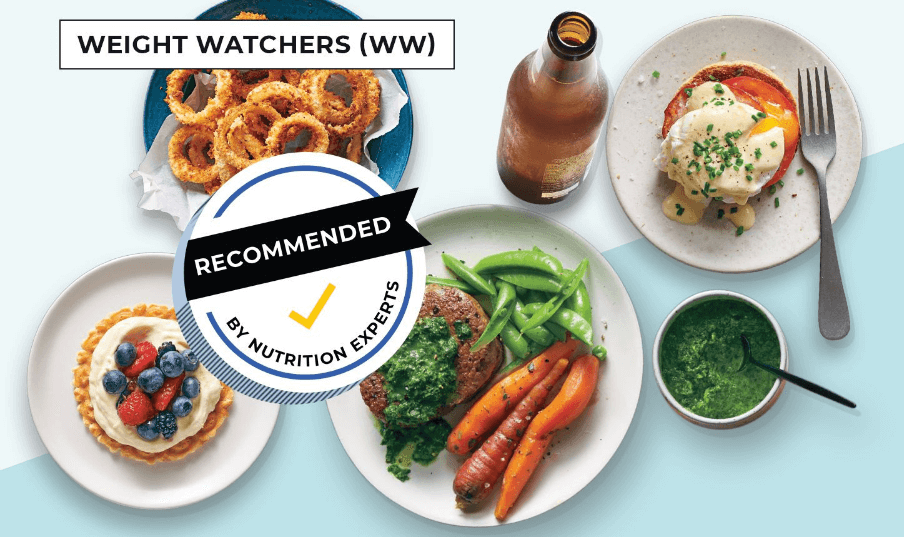One of the best ways to lose weight is to change your diet. However, it can be difficult to get started because you are not sure if the number of diets available is the most appropriate, sustainable, and effective.
Here are the 5 best diet plans to help you lose weight and improve your overall health.
1. Mediterranean Diet
Mediterranean diet Inspired by traditional dietary patterns and considered as the gold standard for preventive medicine due to its comfortable combination of antioxidant and anti-inflammatory properties. This diet plan is rich in fresh fruits, vegetables, legumes, whole grains, and fish, this diet offers health benefits including increased longevity. Although it was developed to reduce the risk of heart disease, numerous studies show that it may also promote weight loss.

How it works: The Mediterranean diet requires no calorie counting or strict restrictions. The Mediterranean diet recommends eating plenty of fruits, vegetables, nuts, seeds, legumes, tubers, whole grains, fish, seafood, and extra virgin olive oil. You can also use red wine in low to moderate amounts, focusing on extra virgin olive oil as the main source of fat and replacing traditional sweets with fruit for dessert.
2. The Paleo Diet
The classical weight loss plan advocates ingesting complete ingredients, the identical manner your ancestors ate. Studies display it can assist with weight reduction and decrease coronary heart ailment hazard elements. Experts like the health care plan Mont Belvieu, TX can guide you regarding this diet plan.

How it works: The Paleo weight loss plan advocates ingesting complete ingredients that weren`t with inside the Stone Age, so grains, legumes, dairy merchandise, salt, delicate sugars, and processed oils are all excluded, and it includes culmination, veggies, lean meats, nuts, seeds in this diet.
3. Intermittent Fasting
Intermittent fasting is a cycle between fasting and eating periods. There are many ways to practice intermittent fasting, from fasting for a few hours each day to a 24-hour fast once or twice a week, such as the 16/8 method, which restricts calorie intake to 8 hours a day, and the 5:2 method, which limits the intake of 500 to 600 calories twice a week. So, it’s important to choose one that suits you and your lifestyle. You can consult a health and wellness coach if you still have any confusion.

How It Works: Intermittent fasting is an easy way to reduce your calorie intake by limiting the amount of time you can eat. This can lead to weight loss. Unless you make up for it by eating too much food during the allowed mealtime.
4. Keto Diet
The low-carb diet plan is one of the most popular weight-loss diets. Examples include the Atkins diet, the ketogenic (keto) diet, and the low-carb, high-fat (LCHF) diet. The keto diet is popular with people with diabetes, but you should avoid this diet if you have diabetes or certain other metabolic disorders.

How it works: On a super-low-carb diet like keto, your body starts using fatty acids instead of carbs for energy by converting them into ketones. This process is called ketosis. A low-carb diet encourages your body to use more fat for fuel by limiting your carbohydrate intake. They usually contain more protein than low-fat diets, which is important because protein can help reduce your appetite, boost your metabolism, and maintain muscle mass.
You should also be aware of notable side effects of your diet or seek guidance from an expert like Health Care Plans Mont Belvieu, TX. It can cause ketone-related diarrhea and constipation, fatigue, mood swings, headaches, and bad breath. According to experts, these symptoms are an essential part of the so-called keto flu, which occurs when the body adapts to using fat, not carbohydrates, for fuel.
5. WW (formerly Weight Watchers) Diet
WW, formerly known as Weight Watchers, is one of the world’s most well-known weight-loss programs. WW provides you with the ability to streamline your tracking. This makes it possible for persons with dietary restrictions, such as food allergies, to stick to the plan. Foods are scored based on calories, saturated fat, sugar, and protein in the most recent edition of WW+, which includes a color-coded program that allocates certain points per day.

How Works: WW diet plan is a points-based system that values different foods and beverages based on their calorie, fat, and fiber. You must stay within your daily score to reach your desired weight. People on the WW diet were eight times more likely to lose 10% of their body weight in six months than those who tried the diet themselves.



